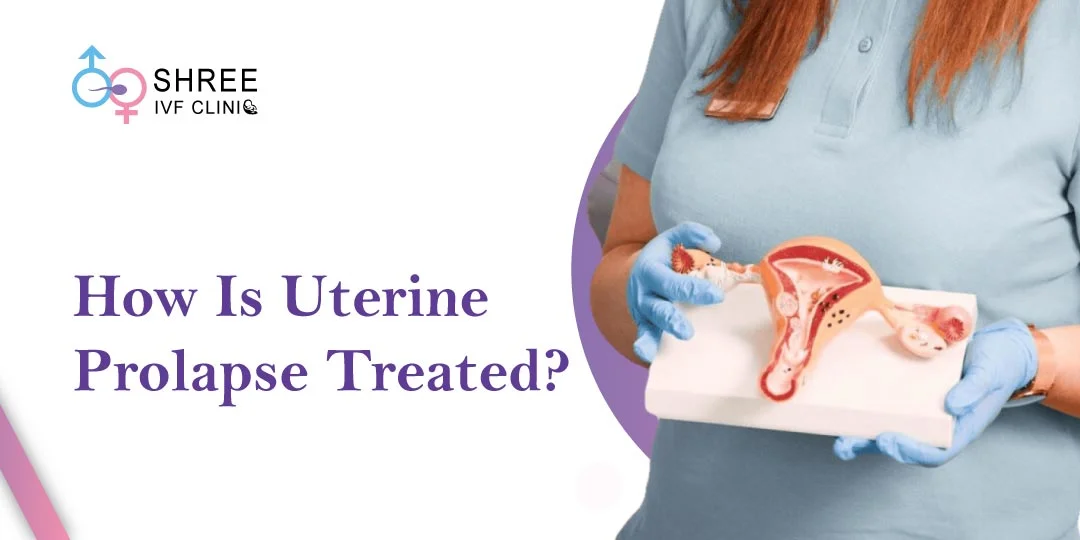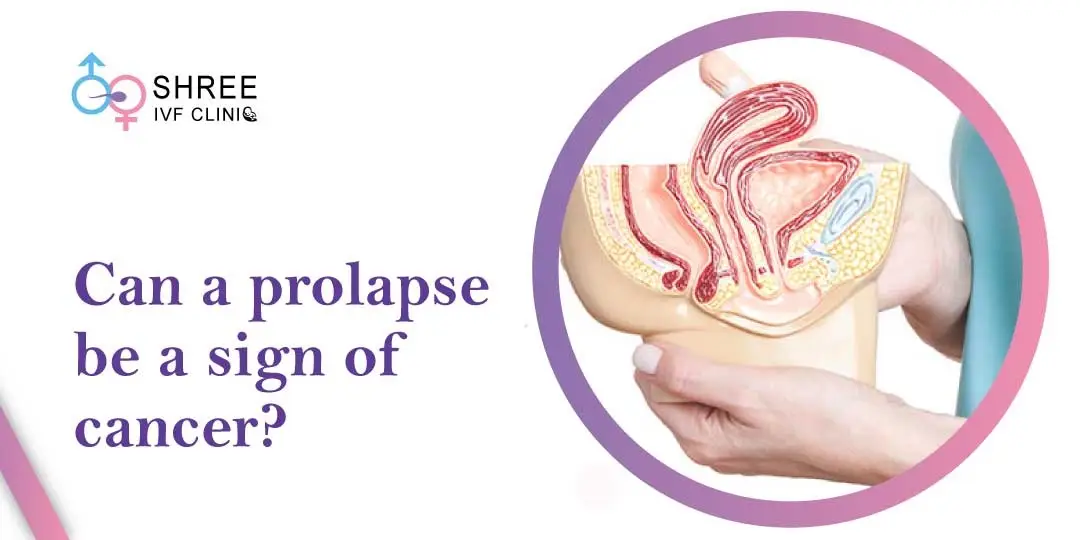Understanding and Treating Uterine Prolapse: A Comprehensive Guide
UPDATED ON 19 SEP. 2023
Welcome to our comprehensive guide on understanding and treating uterine prolapse. As a gynaecologist with over 12 years of experience, I understand the concerns and questions that may arise when faced with this condition.
This article will delve into uterine prolapse, covering its causes, symptoms, diagnosis, treatment options, and preventive measures. We aim to provide you with the information you need to make informed decisions about your health and well-being.

AUTHOR
Dr Jay Mehta
Scientific Director & IVF Specialist with 10+ years of experience
TREATMENT
CONDITION
GET IN TOUCH ON
What Is Uterine Prolapse?
Uterine prolapse occurs when the pelvic floor muscles and ligaments that support the uterus weaken, causing it to descend into or protrude from the vagina. This condition can be classified into different types and stages depending on the severity and extent of the prolapse.
We will explore the causes of uterine prolapse, including multiple vaginal deliveries, age, hormonal changes, obesity, chronic coughing, and genetic predisposition.
You can work with a gynaecologist to develop a suitable management plan by identifying and understanding these underlying factors.
Symptoms and Diagnosis
Recognising the symptoms of uterine prolapse is essential for seeking timely medical attention. The most common symptoms include a feeling of heaviness or pressure in the pelvis, backache, urinary incontinence, difficulty with bowel movements, and a visible or palpable bulge in the vaginal area.
These symptoms can vary in intensity depending on the severity of the prolapse. To diagnose uterine prolapse, doctors perform a physical examination, which may include a speculum and a visual inspection of the pelvic area.
Imaging tests such as ultrasound or MRI may also be used to assess the extent of the prolapse.
Non-Surgical Treatment Options
Various non-surgical approaches can help manage uterine prolapse. Lifestyle modifications are crucial in reducing the symptoms and preventing further deterioration.
Maintaining a healthy weight, avoiding heavy lifting or straining, and practising good pelvic floor habits can improve outcomes. Pelvic floor exercises, or Kegel exercises, can strengthen the pelvic floor muscles and support the uterus.
Additionally, using a pessary, a small device inserted into the vagina to support the uterus, can offer relief and improve the quality of life for some women.
Surgical Treatment Options
Surgical intervention may be necessary in more severe cases of uterine prolapse or when non-surgical treatments are ineffective. There are several surgical procedures available, including vaginal and abdominal approaches.
Vaginal surgeries, such as uterosacral ligament suspension or colpocleisis, aim to restore the normal position and support of the uterus. Abdominal surgeries, such as sacrocolpopexy, involve using mesh or sutures to support the pelvic organs.
A gynaecologist will discuss each procedure’s benefits, risks, and expected outcomes to help you make an informed decision.
Recovery and Post-treatment Care
After undergoing surgery or non-surgical treatments, proper recovery and post-treatment care are crucial for optimal healing and long-term management. The duration of the recovery period will vary depending on the specific treatment received.
During this time, following your doctor’s instructions regarding physical activity, lifting restrictions, and wound care is essential. Pelvic floor exercises play a vital role in maintaining the strength and integrity of the pelvic floor muscles post-treatment.
A gynaecologist will guide you on the appropriate timing and techniques for resuming exercise.

4,790+
379K+
” Every individual and couple’s journey is unique, and
finding the right solutions tailored to their specific
circumstances can make all the difference “
Risks and Complications
As with any medical intervention, there are potential risks and complications associated with the treatment of uterine prolapse. These may include:
- Infection
- Bleeding
- Urinary Incontinence
- Prolapse Recurrence
- Anaesthesia-related Complications
A gynaecologist will thoroughly discuss these risks before any procedure and take precautions to minimise them. Regular follow-up appointments are essential to monitor your progress, identify any complications early, and make necessary adjustments to your treatment plan.
Risks and Complications
While uterine prolapse may not always be preventable, there are steps you can take to reduce your risk or slow its progression.
Maintaining a healthy weight, avoiding activities that put excessive strain on the pelvic area, and practising good pelvic floor habits can all prevent or delay the onset of uterine prolapse.
Additionally, regular pelvic floor exercises throughout life, especially during and after pregnancy, can help strengthen the pelvic floor muscles and support the uterus.
When to See a Doctor
Recognising when it’s important to seek medical attention is essential for managing uterine prolapse effectively. If you experience any of the following symptoms, it is crucial to consult with a gynaecologist:
- Persistent or worsening pelvic pressure or discomfort
- Noticeable bulging or protrusion from the vaginaUrinary Incontinence
- Difficulty with urination or bowel movements
- Urinary incontinence or frequent urinary tract infections
- Pain during sexual intercourse
- Persistent lower back pain or discomfort
If you are unsure whether your symptoms are related to uterine prolapse or if you have concerns, do not hesitate to reach out to a healthcare professional like Dr. Jay Mehta.
They can diagnose accurately, offer personalised advice, and guide you through the appropriate treatment options.
Conclusion
In conclusion, understanding and treating uterine prolapse requires a comprehensive approach tailored to each individual’s unique circumstances. You can make informed decisions about your health and well-being by familiarising yourself with the causes, symptoms, diagnosis, and treatment options. Consult with a gynaecologist who can provide personalised guidance and support throughout your journey.
It’s important to note that uterine prolapse is a common condition many women face, and effective treatments are available to alleviate symptoms and improve quality of life.
By seeking medical attention, adopting healthy lifestyle habits, and following the recommended treatment plan, you can manage uterine prolapse and enjoy a fulfilling life.
Remember that prevention plays a significant role in maintaining pelvic health. Taking proactive steps such as maintaining a healthy weight, practising good pelvic floor habits, and seeking prompt medical attention can help reduce the risk of developing uterine prolapse or its recurrence.
Lastly, it is essential to approach the topic of uterine prolapse with empathy and open communication. Sharing your experiences, concerns, and questions with a gynaecologist or seeking support from online communities can provide valuable emotional support and help you navigate this journey more confidently.
AUTHOR
Dr Jay Mehta
Scientific Director & IVF Specialist with 10+ years of experience
CONDITION
CALL US 24/7 FOR ANY HELP
GET IN TOUCH ON
Share Article on
Recommended Reading
How is a Bleeding Prolapse Treated?
Epithelial, Germ Cell, and Stromal are ovarian cancer types which are classified by their originating cells
Can Pelvic Organ Prolapse Go Away On Its Own?
Uncover the potential for pelvic organ prolapse (POP) to resolve naturally. Explore symptoms, management options, and factors influencing resolution.
Can Pelvic Organ Prolapse be a Sign of Cancer?
Pelvic Organ Prolapse (POP) doesn’t directly cause cancer, but women with this condition are at a higher risk of developing certain cancers like uterine & gallbladder cancers




